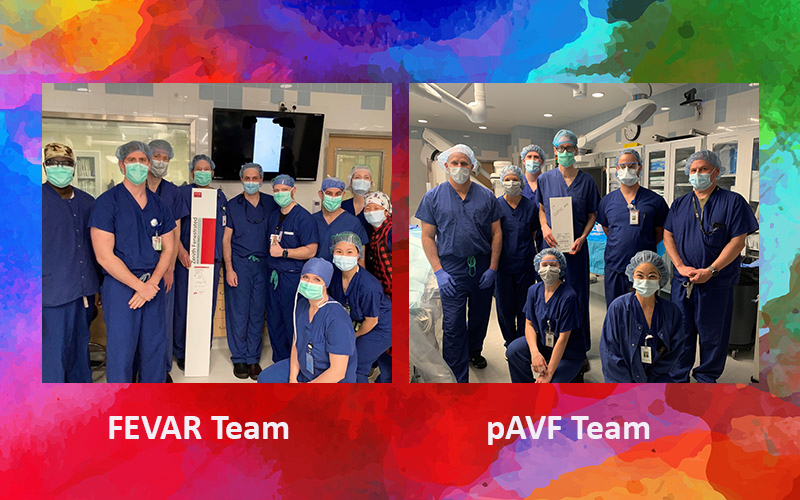
Valley vascular surgeons, Omar Dorzi, MD and Donald Harris, MD are bringing the latest vascular surgical technology to Valley patients. Valley’s state-of-the-art hybrid operating rooms with their advanced imaging capabilities and the motivation of the vascular teams make these leaps in treatment possible for those dealing with abdominal aortic aneurysms and kidney failure requiring dialysis. John Wagner, VP of Perioperative Services, says, “This is strong work by Valley’s vascular teams. The minimally-invasive nature of both leading-edge procedures result in fewer complications than previous methods, greatly benefitting Valley patients.”
Valley Debuts New Minimally Invasive, High-Tech Abdominal Aortic Aneurysm Procedure
An abdominal aortic aneurysmis a bulging, weak spot in the largest blood vessel in the body (the aorta) where it runs through the belly (abdomen). If the aneurysm bursts, it can cause life threatening bleeding and possibly death. In fact, a ruptured AAA is the 15th leading cause of death in the country, and the 10th leading cause of death in men older than 55.
When an AAA may need repair:
- To prevent the risk of rupture.
- To relieve symptoms (pain).
- To restore good blood flow.
- Size of aneurysm greater than 5 centimeters in diameter (about 2 inches).
- Growth rate of aneurysm of more than 0.5 centimeter (about 0.2 inch) over 1 year.
- When risk of rupture outweighs the risk of surgery.
In early March, Valley Medical Center vascular surgeon and medical director Omar Dorzi, MD led the first fenestrated endovascular aneurysm repair (FEVAR) in South King County. FEVAR is designed to treat more complex AAAs located next to the kidney and/or bowel arteries.
Valley is now the only hospital in South King County with this advanced procedure for AAA. This endovascular procedure includes a graft made specific to the patient’s anatomy and the help of state-of-the-art imaging to place the graft and stents through a small incision in the groin. Compared to open surgery, FEVAR is minimally invasive with a shorter procedure time, offers fewer complications and a more brief hospital stay.
A Leap Forward in Care for Patients with Kidney Failure Requiring Long-Term Dialysis
The first adult percutaneous arteriovenous fistula (pAVF) creation within the UW Medicine system was recently performed at Valley Medical Center, with a team led by vascular surgeon Donald Harris, MD. An AVF is a surgically-placed, vascular access point joining an artery and vein together for an ever-growing community of patients needing long-term hemodialysis for kidney disease/failure. Hemodialysis is a treatment to prevent kidney failure that removes waste substances and fluid from the blood normally removed by the kidneys. Hemodialysis is usually done several times a week and lasts 4 – 5 hours.
Traditionally, the fistula access point is made through an arm incision which can cause critical narrowing or failure of the fistula, with risks of bleeding and infection in the arm.
The minimally-invasive pAVF uses a single puncture in the arm and a radiofrequency probe to create an opening which matures into the fistula. This new procedure is a big leap forward as it’s very quick, causes little vessel trauma, and avoids the risks of an incision.

